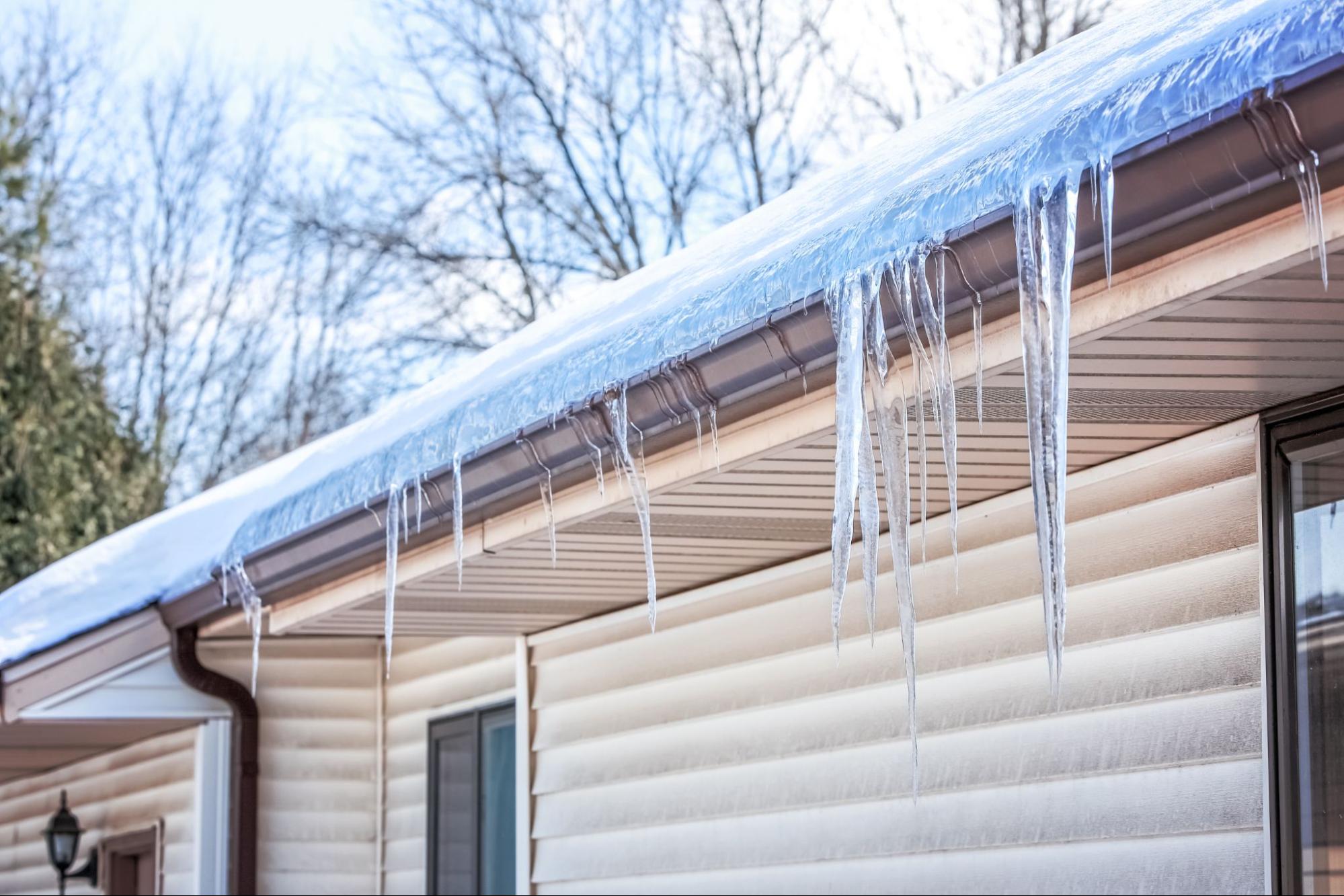Even though we live in the Dallas–Fort Worth Metroplex and have some of the best warm-weather around, our winter months are chilly. We have to deal with snow and ice just like the majority of the United States during the winter, along with below-freezing temperatures.
With our weather patterns, there are many times when it is snowy or icy the night before, and then 24 hours later, everything is melted. Other times though, snow and ice stick around. With our constant freeze, melt, and then refreeze temperature situations throughout the winter months, issues like black ice and ice dams become a problem.

So, What Is an Ice Dam?
Ice dams are blockages of ice and snow on a roof that are caused by this freezing, melting, and refreezing situation. This blockage is a compressed layer of ice and snow stuck around the eaves and gutters of a home or office building. It actually backs up any current water trying to flow off the roof.
This backed-up water is stuck, and when temperatures drop below freezing again, the cycle of freezing and more blockage occurs.
Ice and snow on a roof cause enough stress on a building’s structure, but if not addressed, ice dams can cause even more damage.
Ice Dam Damages
A roof is a big investment for a home or business owner, and an ice dam has the potential to do some serious damage.
Ice dams usually form around the eaves and gutters of a roof because these are the areas not heated by the attic/top room of a building. They hang out from or are attached to the edge of a building, so these areas are the same temperature as the outside. This means that during the winter, the temperature of these parts of a building can also be freezing or below.
When snow or ice from on top of the actual roof melts, starts flowing down the roof, and then hits a freezing eave or gutter, what do you think happens? That’s right, it freezes again! It’s not long before gutters are full of ice, eaves are full of ice, and there is a large ice blockage all around the edges of a roof. The next time snow or ice melts, that water has nowhere to go because the components of the roof meant to shed water are blocked with ice.
Below are the five most common types of damage caused by ice dams:
- Dislodging gutters
- Ruining the overall structure and look of gutters
- Water pooling on the roof causing weak spots
- Water pooling on the roof causing actual leaks
- Ripped or damaged roof shingles
Ice dams involve water, snow, and ice accumulating in a single area of a roof. With constant freezing, unfreezing, and then refreezing, these ice blockages can get extremely heavy very quickly. The eaves, gutters, and drainage systems of a roof are not designed to withstand this extreme amount of weight and pressure.
In addition, the eaves, gutters, and drainage systems of a roof are supposed to help shed water off a roof. If they are blocked by an ice dam, they cannot do their job, so water stays on the roof when it’s not supposed to. Water can make its way under shingles, can loosen or even tear off shingles, and then next thing you know, you have a water leak in your attic or ceiling.
How to Prevent an Ice Dam
Throughout the winter months, ongoing observation of snow and ice accumulation and then regular snow and ice removal on a roof is the main way to prevent an ice dam from happening in the first place. However, ensuring a home or building is well insulated and well ventilated is also key to preventing ice dams from forming.
The ebb and flow of a roof’s temperature is a main contributor to the melting/refreezing process. If the temperature in the attic or top level of a building stays more constant, the roof temperature does not change so drastically compared to the outside temperature. This helps prevent the situation described above where snow or ice on a roof melts, then hits a freezing eave, and immediately refreezes. The roof and the eaves are a closer temperature to each other in a well-insulated environment.
It’s recommended to call upon the services of an inspector to check the insulation and ventilation rating of a home or business after the winter months. This way, fixes can be put into place before snow, ice, and freezing temperatures occur. This service is actually recommended annually, especially if you have an older home and upgrades might be needed.
Ice Dam Roof Inspection
At Alpine Sheet Metal Systems, we know a thing or two about roofs and have been serving the Dallas and Fort Worth area for over 20 years. We can help make sure the roof for your home or business is ready for the winter months, and we also specialize in repair and maintenance.
No matter the time of year though, we provide roofing services throughout Texas, Oklahoma, Louisiana, Alabama, and Arkansas. We pride ourselves on combining old-world craftsmanship with cutting-edge technology. Give us a call and request a free quote for your next roofing project.

